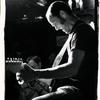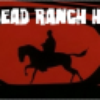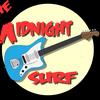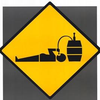DannySnyder

Joined: Mar 02, 2006
Posts: 11075
Berkeley, CA











|

Posted on Aug 22 2010 11:18 PM
A very interesting essay on the original intent of these offset guitars, disguised as a gear review:
http://www.jag-stang.com/Reviews/review.php?id=209
— Danny Snyder
"With great reverb comes great responsibility" - Uncle Leo
I am now playing trumpet with Prince Buster tribute band 'Balzac'
Playing keys and guitar with Combo Tezeta
Formerly a guitarist in The TomorrowMen and Meshugga Beach Party
Latest surf project - Now That's What I Call SURF
|
Pyronauts

Joined: Feb 27, 2006
Posts: 1165
Northern CA






|

Posted on Aug 22 2010 11:45 PM
 Yeah, suck it all you "round-wound" users! Yeah, suck it all you "round-wound" users! 
|
JakeDobner

Joined: Feb 26, 2006
Posts: 12159
Seattle



|

Posted on Aug 22 2010 11:55 PM
That guy is clearly someone who makes uninspired and borrowed/pilfered music.
It really doesn't matter what those guitars were made for. Just that people like to play them. They tend to lend themselves nicely to several genres.
I maintain that Jaguars were made for Shoegaze, not Jazzmasters though since they were too early for shoegaze.
1) The Jazzmaster and Jaguar were purposely designed to be used by Jazz and surf rock guitarists; they were never designed for rock/pop/grunge/shoegaze/alternative rock; Fender had already designed the Telecaster and Stratocaster that had captured the imagination of rock/pop guitarists. Hence, they made the Jazzmaster and Jaguar to target a different section of the guitar market.
"Captured the imagination of rock/pop guitarists". I find that sentence to be utterly precious.
2) With this in mind, the bridge and floating tremelo on the Jazzmaster and Jaguar were designed to be used with Flatwound strings only, as are used in Jazz/surf rock; 11 gauge minimum and the heavier the gauge the better. This fact alone eliminates bridge rattles and unwanted movement immediately. They were NEVER designed for standard nickle/steel wound strings etc as are commonly used today, which creates all the buzzing and movement on the bridge/neck.
These guitars, if properly setup have absolutely zero problems, although the bridge is flawed because of how little contact the bridge makes with the body, which is part of how people get unique tone with these guitars. The reviewer really just needs to learn how to setup a guitar. Doesn't anything rattle? Yes? Then make sure it doesn't. Problem solved.
3) Flatwound strings produce a very warm and thick tone, hence the reason why the Jaguar and Jazzmaster are equipped with 1MEG pots and produce a sharper sound, this is to purposely balance out the excessive 'deadness' of Flatwounds. Of course if you do not use flatwound strings, then the Jazzmaster and particuarly the Jaguar sound excessively sharpe in tone; wrong string choice is again the problem.
So... Fender made the guitar for flatwounds but thought they sounded dead so they put in 1 MEG pots to make them sound like roundwounds would? Unlikely.
4) The low E,A,D strings on Flatwounds are extremely thick and bassey, hence the reason why the Jaguar is purposely built with a Bass-cut slide switch, which when in use thins out the tone for the purpose of playing lead. If you use Flatwound strings the bass-cut slide switch is a perfectly sensible and welcome switch that does not make the tone unuseable and too thin, only if you use very light or standard strings does the switch not make sense when in use.
See above...
5) The Jaguar's so called 'short-scale' neck was designed with the aim of making playing heavy gauge flatwound strings easier, particuarly for bending at standard/concert pitch as is commonly used in Jazz. Also, the Jaguars shorter scale's reduction in string tension, was not considered a problem because the heavy gauge of Flatwounds was still strong/heavy enough to make the bridge rattle/movement free.
I just dont' think this is why Fender chose the 24" scale length for the Jaguar. And 24" is not short, 25.5" is just as long. And If Jags/Jazzs are made for Flats and the Jag has a 24" scale length to make it easier to play, why was the Jazzmaster given a 25.5"... to make it difficult to play with flatwounds? I thought it was designed to have flatwounds?
6)The rythmn section on the Jazzmaster and Jaguar is so warm in tone because it was designed for Jazz/big band style music and played in this style sounds perfect for rythmn playing.
But flatwounds are "so bass heavy" already. Why the need for the rhythm section? And you switched on the bass cut for lead and you switch on the rhythm section for rhythm, what is inbetween?
7) The mute assembly on a Fender Jaguar is purpose built for muting over long periods, as in Surf Rock and sometimes Jazz, it is not designed for short periods of muting that require quick changes, hence it is very easy to use for the purpose for which it was designed. Also, the mute is only meant to deaden the strings by tounching them lightly, and needs to be set correctly to avoid pushing the guitar out of tune as many people complain about; if your mute pushes the guitar out of tune it is set too high on it's upward movement, or your string gauge is too light, or you are not using Flatwound strings as are a must on Jazzmasters/Jaguars.
Terrible invention, great idea... I just had to point that out.
 Vintage Jazzmasters and Jaguars had saddles that had deep and wide grooves in them that were excellent for the heavier gauge of Flatwounds. It is only modern-day Japanese reissues (and to a lesser extent USA vintage models) on which the bridge saddle grooves are to shallow and narrow, which leads to the problem with strings/saddles popping out during bends. This problem is once again further compounded by the use of light roundwound strings, that are not suitable for Jazzmasters and Jaguars because they are not heavy enough and do not sit in the saddles properly because they are roundwound. Flatwound strings do reduce to a significant degree problems with saddles, because they sit in them much deeper and are much smoother when using the tremelo. If the reissue Jazzmasters and Jaguars saddles were made as the originals then there would be no problem in this area. Vintage Jazzmasters and Jaguars had saddles that had deep and wide grooves in them that were excellent for the heavier gauge of Flatwounds. It is only modern-day Japanese reissues (and to a lesser extent USA vintage models) on which the bridge saddle grooves are to shallow and narrow, which leads to the problem with strings/saddles popping out during bends. This problem is once again further compounded by the use of light roundwound strings, that are not suitable for Jazzmasters and Jaguars because they are not heavy enough and do not sit in the saddles properly because they are roundwound. Flatwound strings do reduce to a significant degree problems with saddles, because they sit in them much deeper and are much smoother when using the tremelo. If the reissue Jazzmasters and Jaguars saddles were made as the originals then there would be no problem in this area.
He is right, but have any of you ever bent a string out of the saddle?
|
JakeDobner

Joined: Feb 26, 2006
Posts: 12159
Seattle



|

Posted on Aug 22 2010 11:58 PM
Oh, and I find it likely these guitars were set up and developed with flatwounds. But roundwounds did exist. No .09s-.40, of course...
Does my memory fail me, or has Dick Dale stated that he used roundwounds for all of his surf stuff? If so, then one would presume Leo was getting feed back on his guitars and how they handled roundwounds since Dick was clearly somebody that had Leo's ear.
And as for the Jag being developed for "Surf Music". Let's Go Tripping was released in September 1961. The Jag came out in 1962. Does anybody know what month? It is likely that a nearly final prototype of this guitar predates Dick's record. Therefore, predates "Surf Music".
|
MissingLink

Joined: Jul 23, 2008
Posts: 488
Edge of the East China Sea


|

Posted on Aug 23 2010 02:03 AM
JakeDobner
And 24" is not short, 25.5" is just as long.
I follow most of the points in your post clearly enough, but I don't get this. 25.5 is "just as long as" 24? Are you saying that 24" qualifies as a long scale, and that a long scale is a long scale is a long scale, i.e., no practical difference? Or have I just missed the point entirely?
|
Brian

Joined: Feb 25, 2006
Posts: 19335
Des Moines, Iowa, USA










|

Posted on Aug 23 2010 07:56 AM
1) The Jazzmaster and Jaguar were purposely designed to be used by Jazz and surf rock guitarists;
Jazz players yes, surf players no. The genre did not exist when these guitars were created/designed.
— Site dude - S3 Agent #202
Need help with the site? SG101 FAQ - Send me a private message - Email me
"It starts... when it begins" -- Ralf Kilauea
|
hlieboff59

Joined: Jun 27, 2008
Posts: 576
Marlboro, New Jersey

|

Posted on Aug 23 2010 08:04 AM
there is a 10 part guitar Center concert series of Dick Dale in California somewhere and I remember Dick Dale telling him the strings he uses.
He uses Blue Steel rounds. there made specially to not break!!!!
|
Brian

Joined: Feb 25, 2006
Posts: 19335
Des Moines, Iowa, USA










|

Posted on Aug 23 2010 08:09 AM
JakeDobner
Does my memory fail me, or has Dick Dale stated that he used roundwounds for all of his surf stuff?
Dick Dale told me via email in 2005:
Dick Dale
we had flat wounds and round wounds....... i tried flat wounds cause they were smooth and didnt hurt my fingers as much because my string gage was 16p 18p 20p 39w 49w 60w
but the flat wounds totally changes the sound as they were mainly used for jazz players to get a muted more quieter sound....
i went right back to the round wounds......
plus different companies had deeper valleys and higher ridges on their wound rounds.....
fender made their own main shaft and did their own winding.....
ernie ball bought the fender shafts did their own winding.....
the fender string was better...... i now use dean markley blue steel strings......d
— Site dude - S3 Agent #202
Need help with the site? SG101 FAQ - Send me a private message - Email me
"It starts... when it begins" -- Ralf Kilauea
|
JakeDobner

Joined: Feb 26, 2006
Posts: 12159
Seattle



|

Posted on Aug 23 2010 09:14 AM
MissingLink
JakeDobner
And 24" is not short, 25.5" is just as long.
I follow most of the points in your post clearly enough, but I don't get this. 25.5 is "just as long as" 24? Are you saying that 24" qualifies as a long scale, and that a long scale is a long scale is a long scale, i.e., no practical difference? Or have I just missed the point entirely?
Most every other guitar company uses 24.75 as their standard scale or somewhere near, Gretsch is 24.6. Halfway between 24 and 25.5.
|
JakeDobner

Joined: Feb 26, 2006
Posts: 12159
Seattle



|

Posted on Aug 23 2010 09:16 AM
Brian, so it sounds like Fender was making their own rounds, which would presumably go on their guitars.
|
bterry

Joined: Jun 28, 2010
Posts: 26
|

Posted on Aug 26 2010 12:17 PM
This 'article' seems to mostly be conjecture with some bs liberally thrown in, but, I do agree on one point after playing JM's (vintage ones) for years...
Heavier gauge strings, IME, do tend to work better with the stock bridge. Also, .11's on a Jazzmaster feel like .10's on a strat or tele. I tend to play .12's (rock and indie stuff) on my JM and .11's on my tele.
I have and do use .10's on JM's sometimes, and they work fine - but, I have definitely experienced more issues with buzzing and saddle movement with lighter strings.
One thing to keep in mind is where you set the bridge when setting up the guitar - most people want to float it in the center, but, IME it is much better to cock it all the way back, thus creating a slightly deeper angle for the strings. The trem still works great this way. Just my .02 cents.
BT
|
rotnroby

Joined: Mar 31, 2010
Posts: 877
Santa Barbara Ca... in the 805

|

Posted on Aug 26 2010 05:51 PM
There's really no need for flats on a Jag or a Jazzy it's just a choice you can make... I use flats because I love the feel and tune..
|
JakeDobner

Joined: Feb 26, 2006
Posts: 12159
Seattle



|

Posted on Aug 26 2010 06:31 PM
rotnroby
There's really no need for flats on a Jag or a Jazzy it's just a choice you can make... I use flats because I love the feel and tune..
Exactly!
|
DeadRanchHands

Joined: Apr 15, 2008
Posts: 1281

|

Posted on Aug 26 2010 08:56 PM
I think Jazzmasters sound just as good either way. Jags, I think, sound best with flats. Just IMO.
— http://www.reverbnation.com/thedeadranchhands
http://www.youtube.com/watch?v=jZEW74mHjQk
|
WaimeaBay

Joined: Jul 05, 2006
Posts: 969



|

Posted on Aug 31 2010 07:32 PM
no troll here, but do any pro jazz players use a jaguar or even a jazzmaster? I thought it was a genre geared very heavily towards hollow body and semi-hollow body guitars.
|
seafoam_johnny

Joined: Jul 27, 2007
Posts: 1099
4 faces. (Where the buffalo roam)

|

Posted on Aug 31 2010 08:27 PM
Jake, you made me dizzy (not a difficult feat) must go back and reread. I'll never sleep if I don't. 
|
DeadRanchHands

Joined: Apr 15, 2008
Posts: 1281

|

Posted on Aug 31 2010 08:37 PM
WaimeaBay
no troll here, but do any pro jazz players use a jaguar or even a jazzmaster? I thought it was a genre geared very heavily towards hollow body and semi-hollow body guitars.
Mickey Baker used a Jazzmaster for a while. I think Joe Pass (?) used a Jag, but only because he was dirt poor and couldn't afford a real jazz guitar.
— http://www.reverbnation.com/thedeadranchhands
http://www.youtube.com/watch?v=jZEW74mHjQk
|
SpaceFargo

Joined: Feb 18, 2010
Posts: 260
Lake Forest, CA


|

Posted on Sep 01 2010 05:52 AM
UmaFloresta
WaimeaBay
no troll here, but do any pro jazz players use a jaguar or even a jazzmaster? I thought it was a genre geared very heavily towards hollow body and semi-hollow body guitars.
Mickey Baker used a Jazzmaster for a while. I think Joe Pass (?) used a Jag, but only because he was dirt poor and couldn't afford a real jazz guitar.
Joe Pass' Jazzmaster was actually owned by his rehab facility. One of his fans gave him a hollowbody because nobody plays Jazz with a Jazzmaster.
— Hot Summer Comes Again!
Let's Go Beach! Let's Go Beach!
|
rotnroby

Joined: Mar 31, 2010
Posts: 877
Santa Barbara Ca... in the 805

|

Posted on Sep 01 2010 08:18 AM
Not really... I know that Joe Pass jazz great played a Jaguar in the early 60s check you tube type in Joe pass plays a Jaguar.. It's really a cool video Joe's playing the Jag through a blonde Showman!
|
Stormtiger

Joined: Dec 12, 2006
Posts: 2687
Ventura, CA




|

Posted on Sep 01 2010 09:30 AM
SpaceFargo
Joe Pass' Jazzmaster was actually owned by his rehab facility. One of his fans gave him a hollowbody because nobody plays Jazz with a Jazzmaster.
Nobody? Meet Roy Lanham
http://www.youtube.com/watch?v=MBYUuAkWu7M
|



































